Application Components
Application Components capture what people generally think of as "applications." An application could be a CEO Dashboard that requires a web server/farm, an app server, and a database server. An Application Component can be linked to just one service or be defined without any underlying service.
Defining Application Components Based on Services
Each Service Instance edit form includes an option for linking that service with an Application Component.
In the example below, we've linked the "Oracle Recovery" service with the "Oracle Database Server" Application Component.
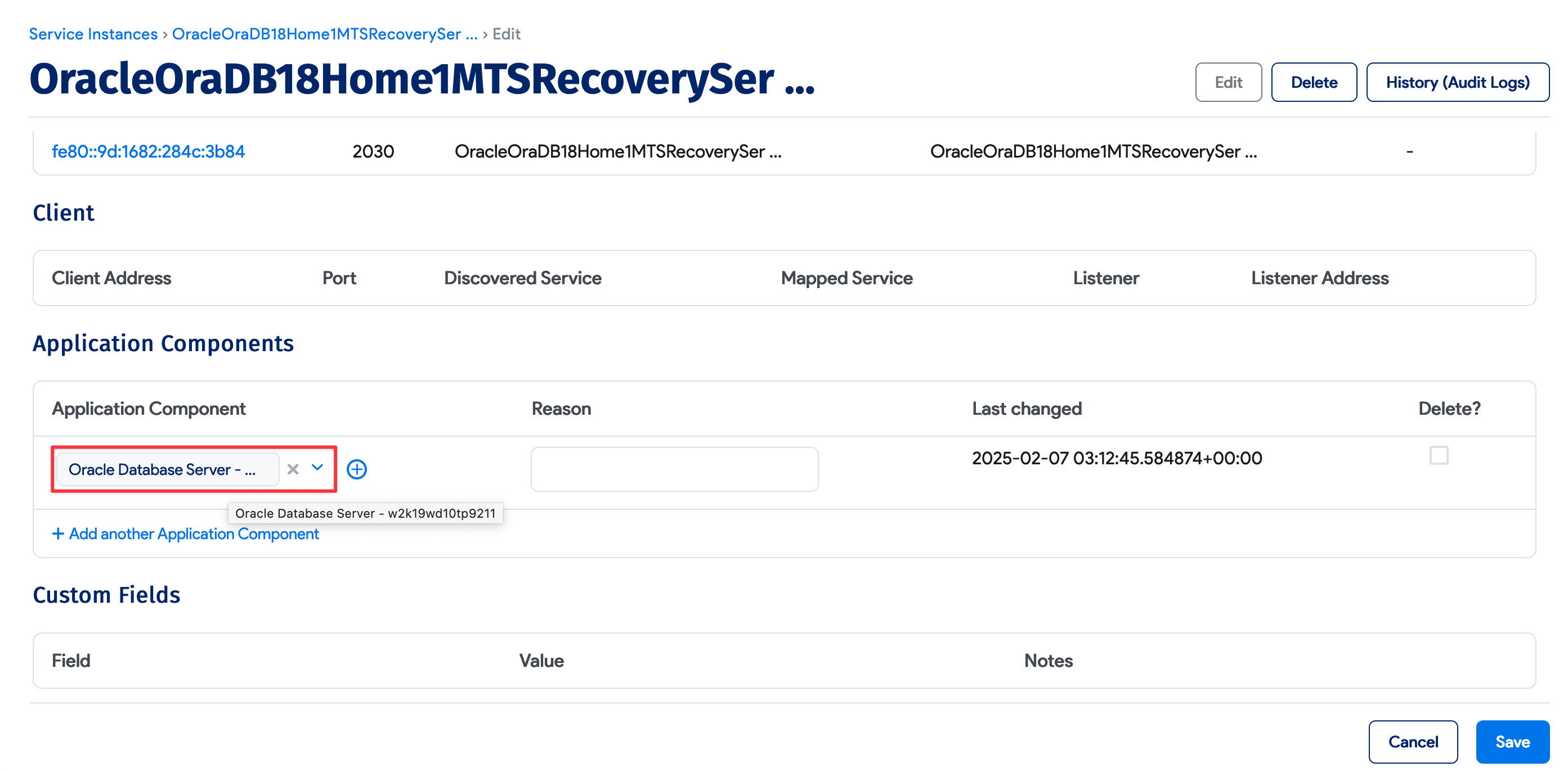
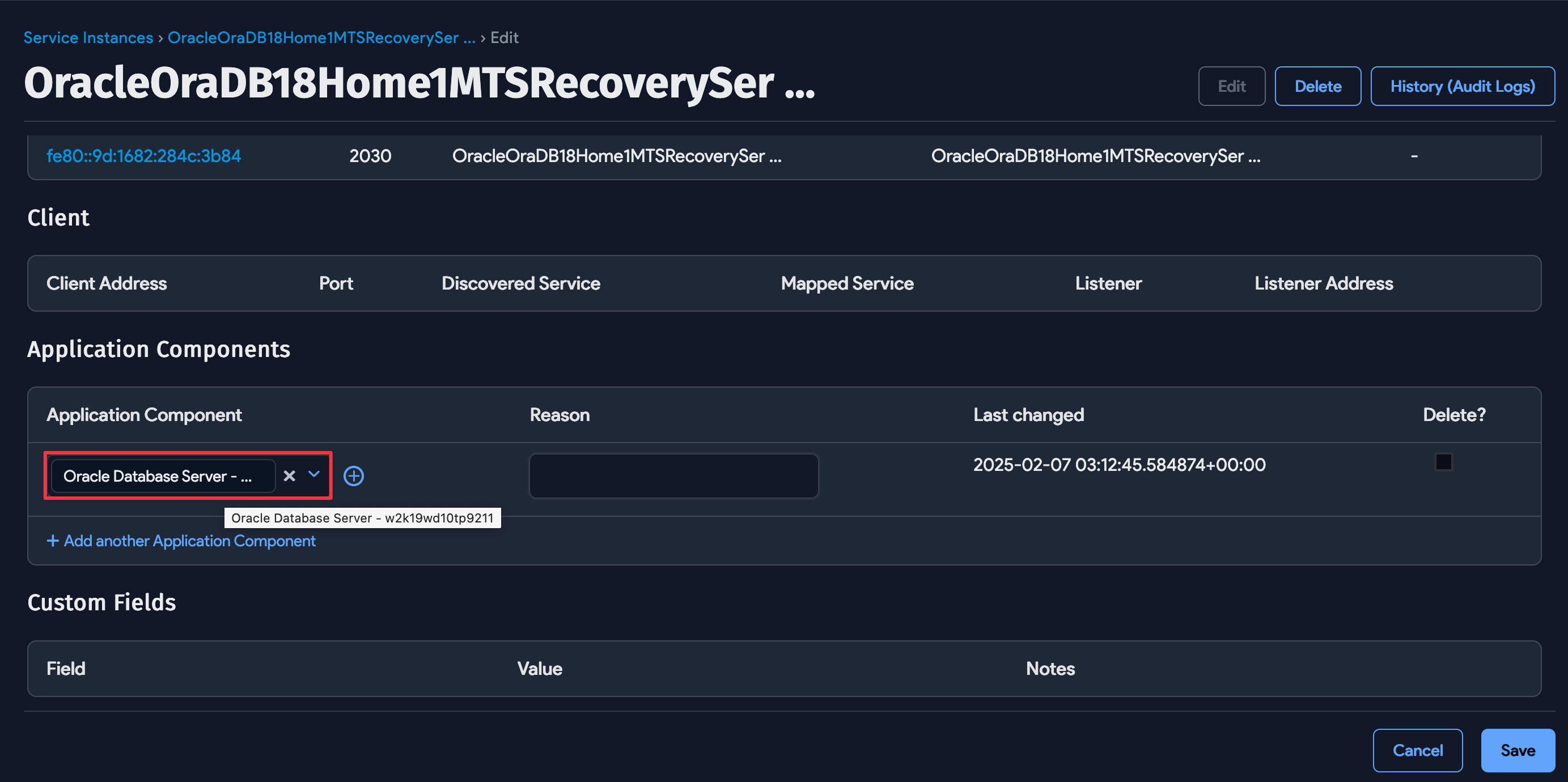
If you navigate to the edit form for an Application Component, you can also link one or more services from that screen:
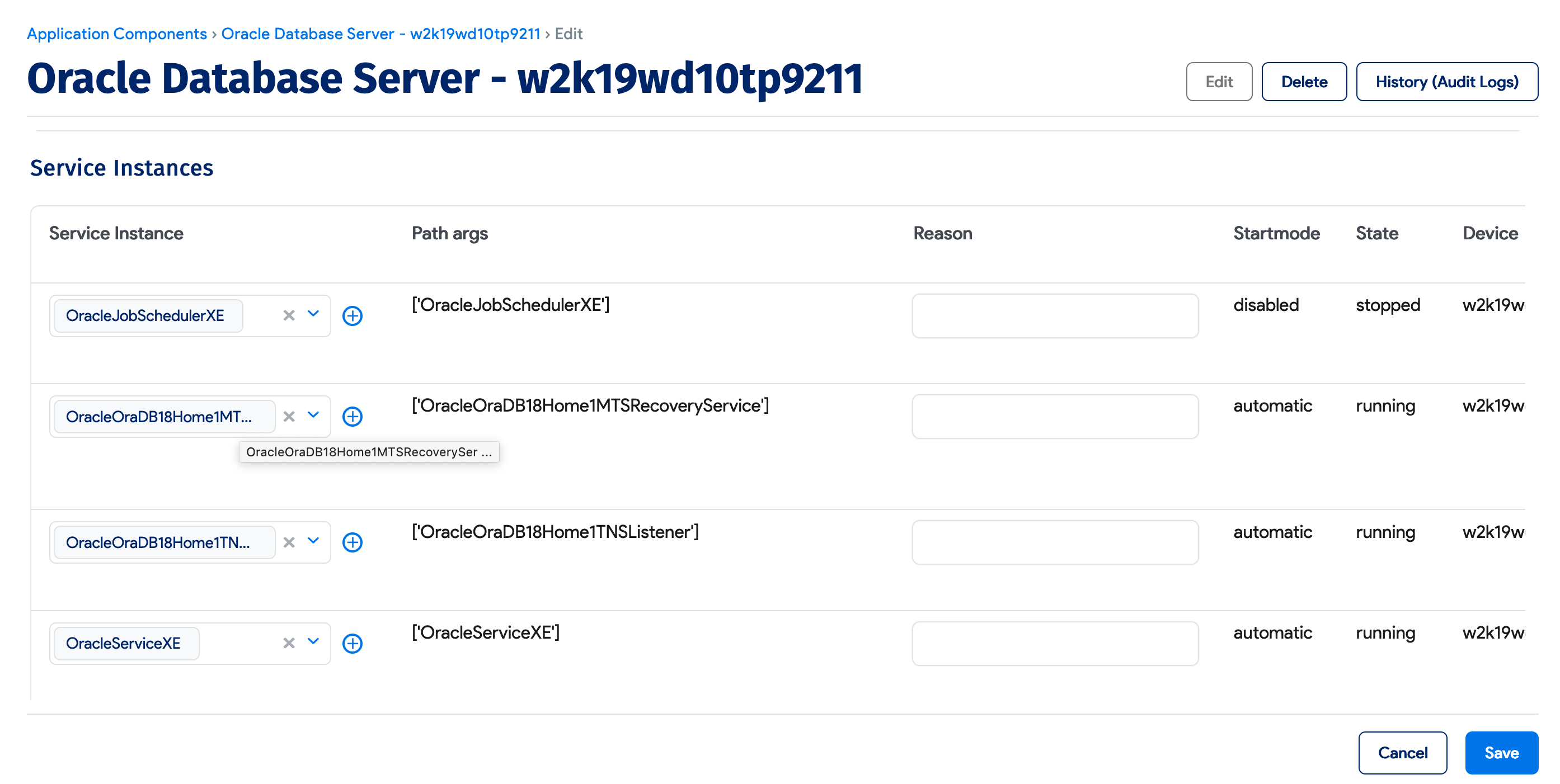

Converting Client-Only Process to Services
Convert a client-only process into a Service by clicking the Convert to Service action available when hovering over the client-only process in the Topology and Application Groups visualization pages:
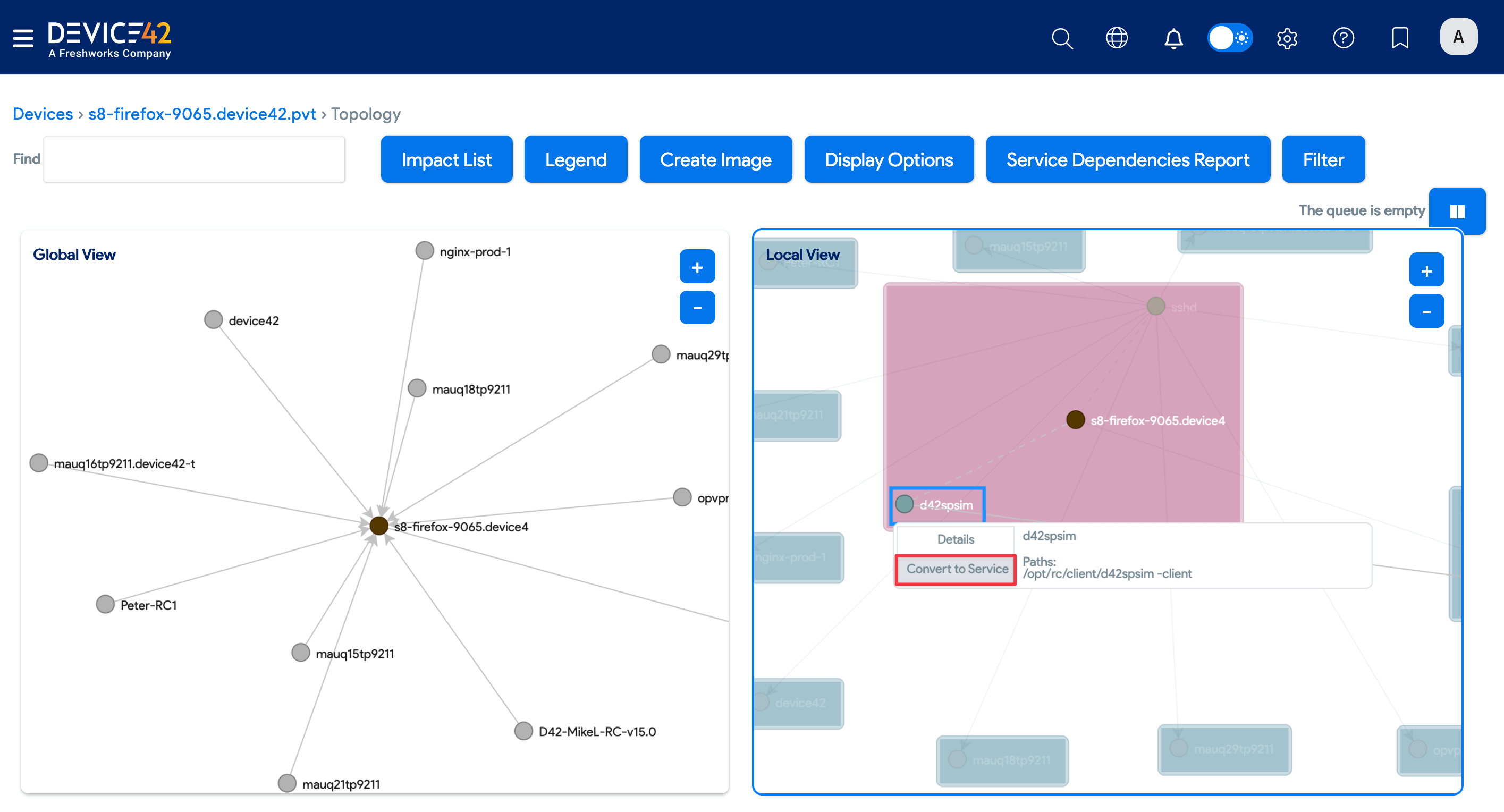
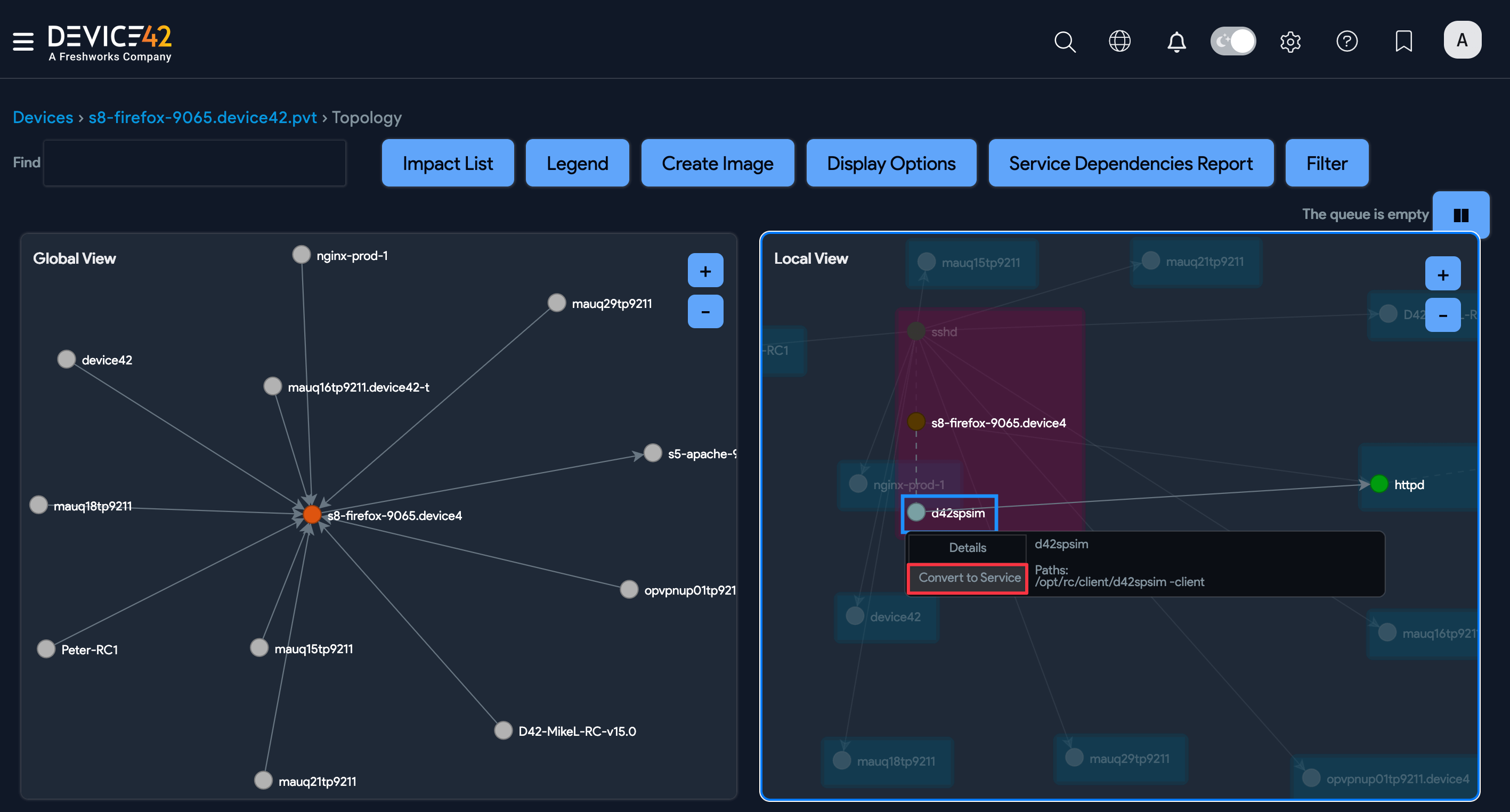
- On Topology pages, the page will reload and display a success message.
- On Application Groups visualization pages, you'll see a success message and be prompted to re-run the Application Group.
Once converted, the process is treated as a full Service and can be used like any other service, for example, in Application Components and AppFocus filters.
Defining Application Components Not Based on Services
Device42 automatically categorizes Application Components by Database or Web Server. You can filter the list page based on this Category, and can categorize your custom components as well.
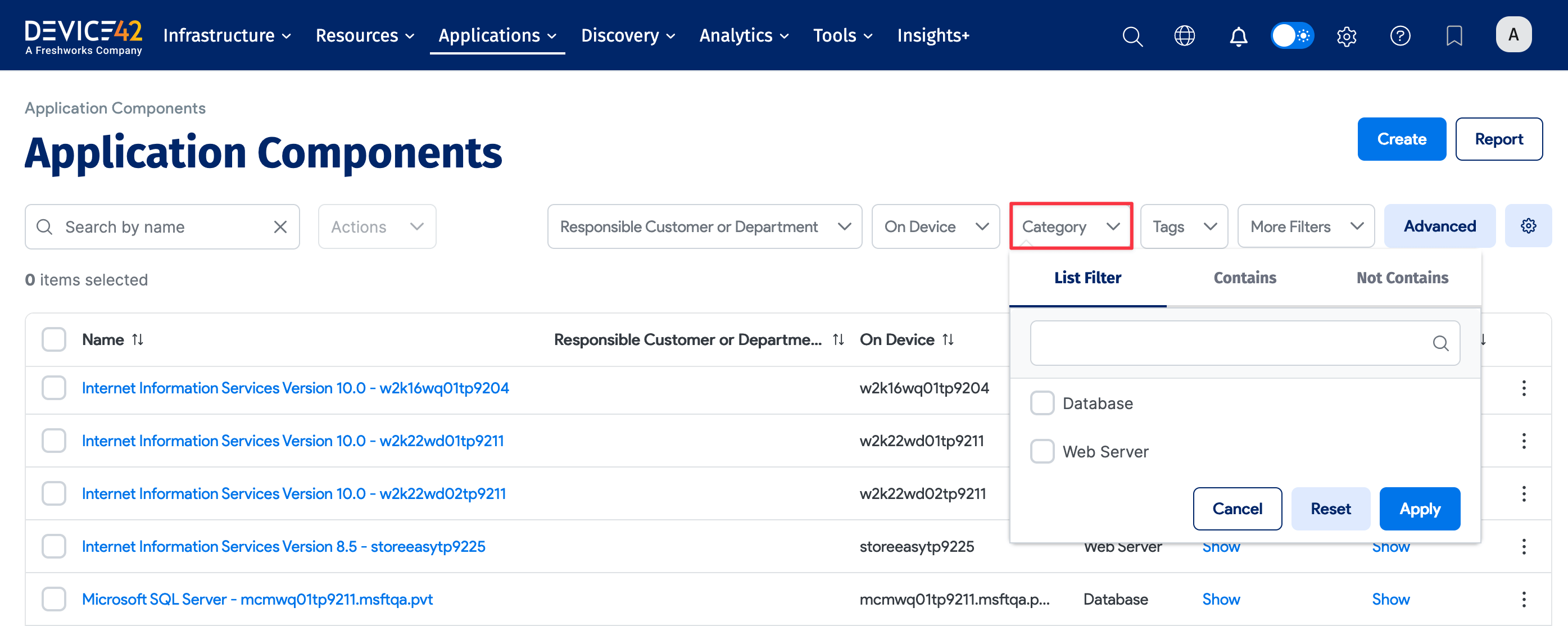
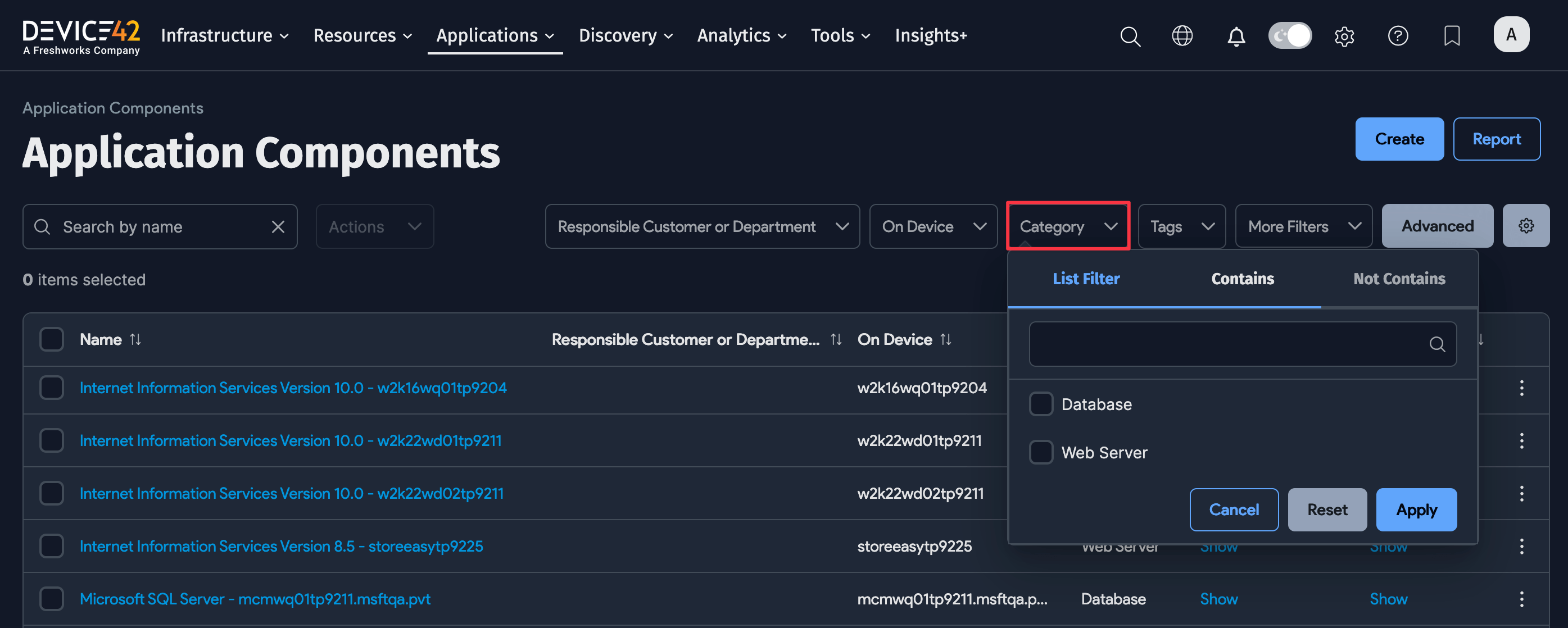
Let's create a new Application Component with dependencies. All of the dependencies will show up in impact charts, impact lists, and dependency graphs.
-
Define a "store" that depends on a device named "storeeasytp9225". If you like, you can also identify the Responsible Customer or Department, and choose which organizational groups are affected by this Application Component.
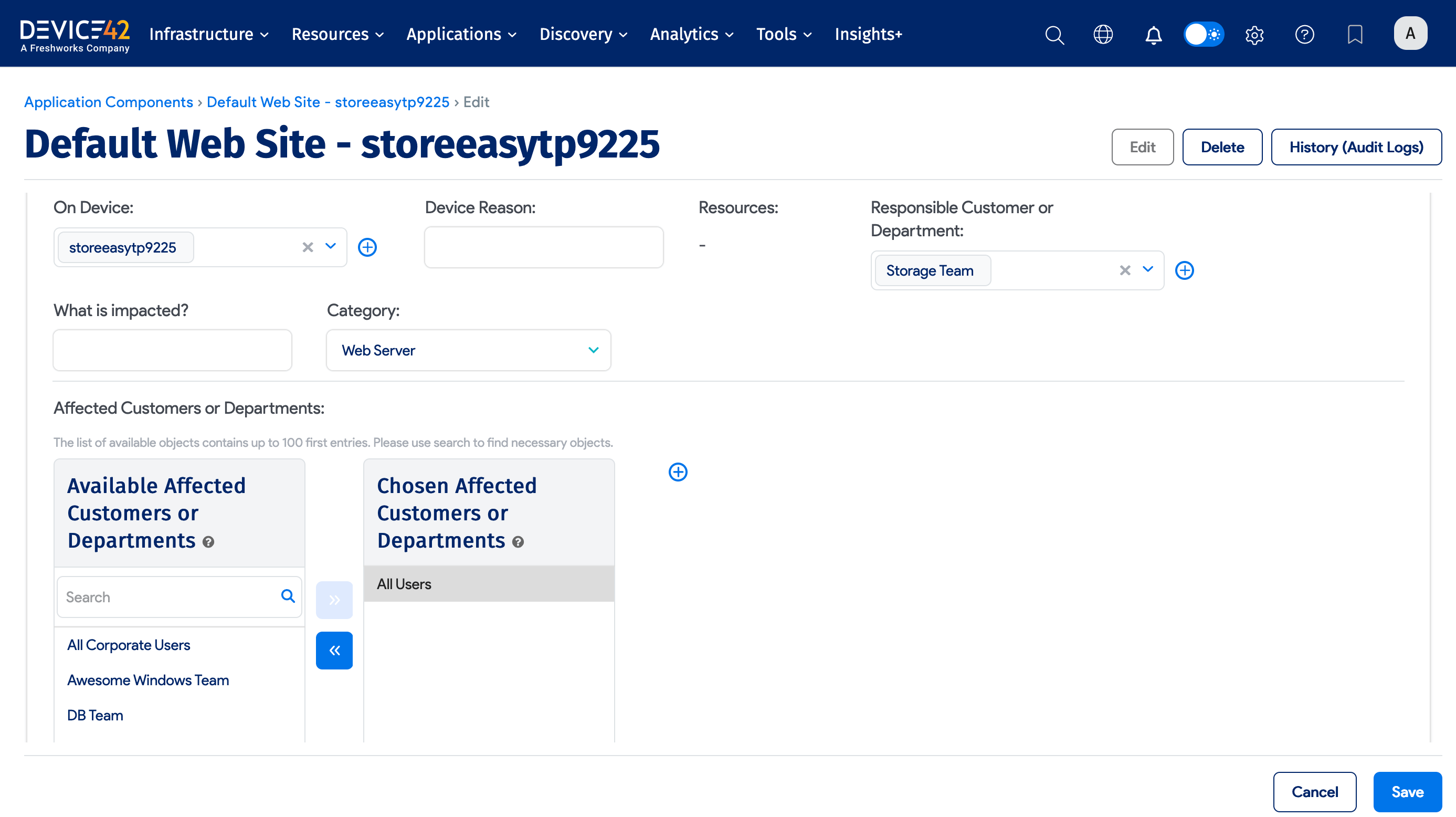
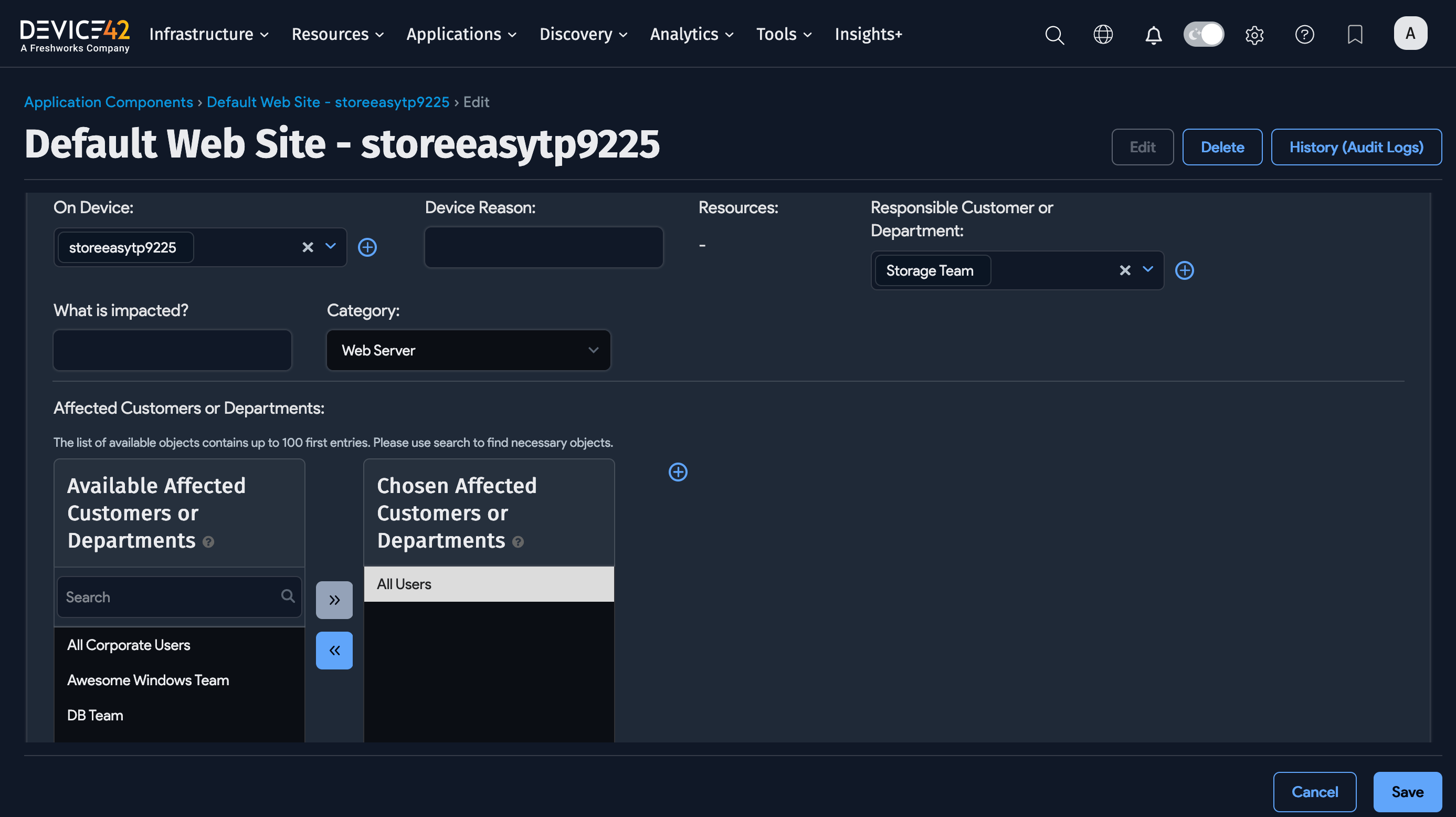
-
Next, define a Main Exchange Server component:
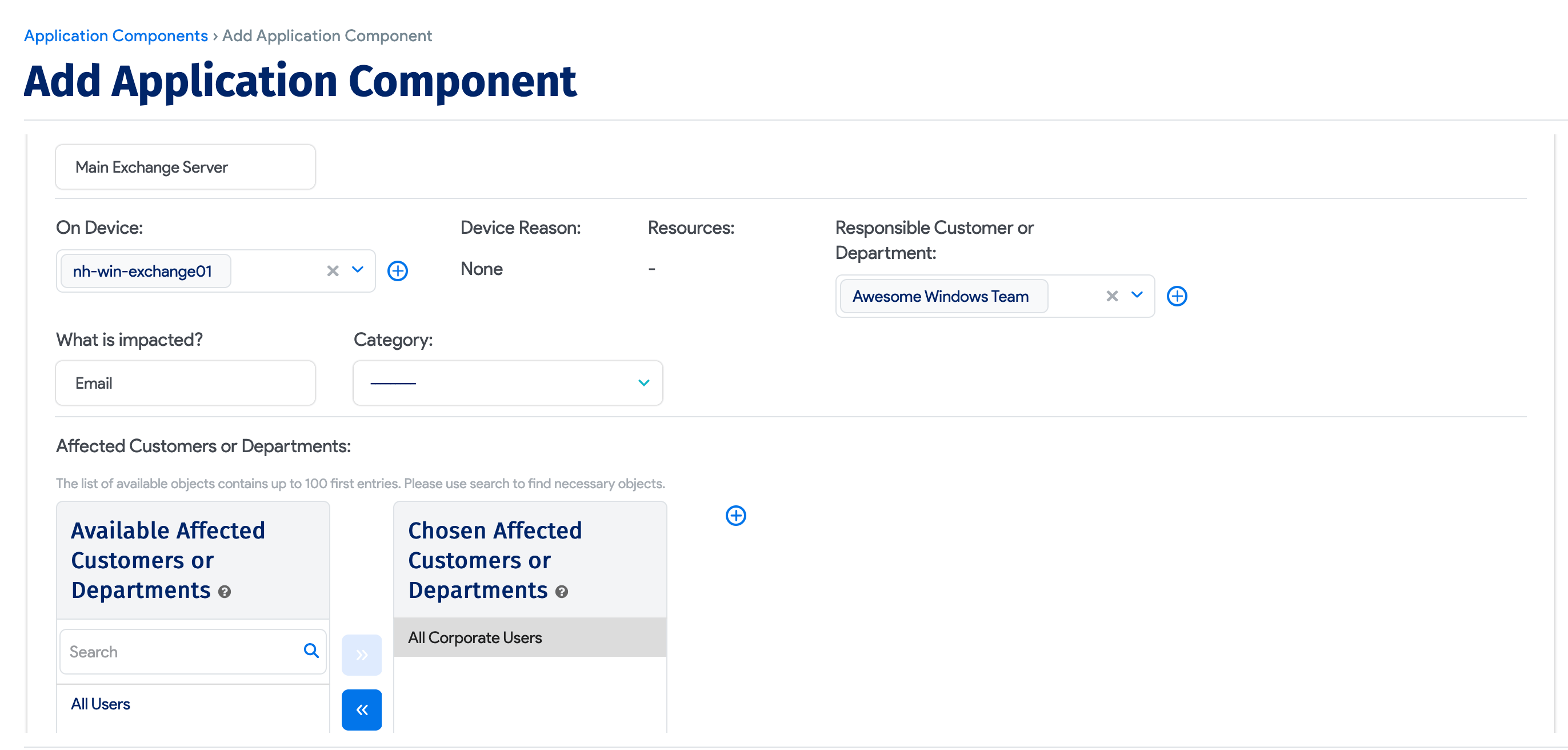
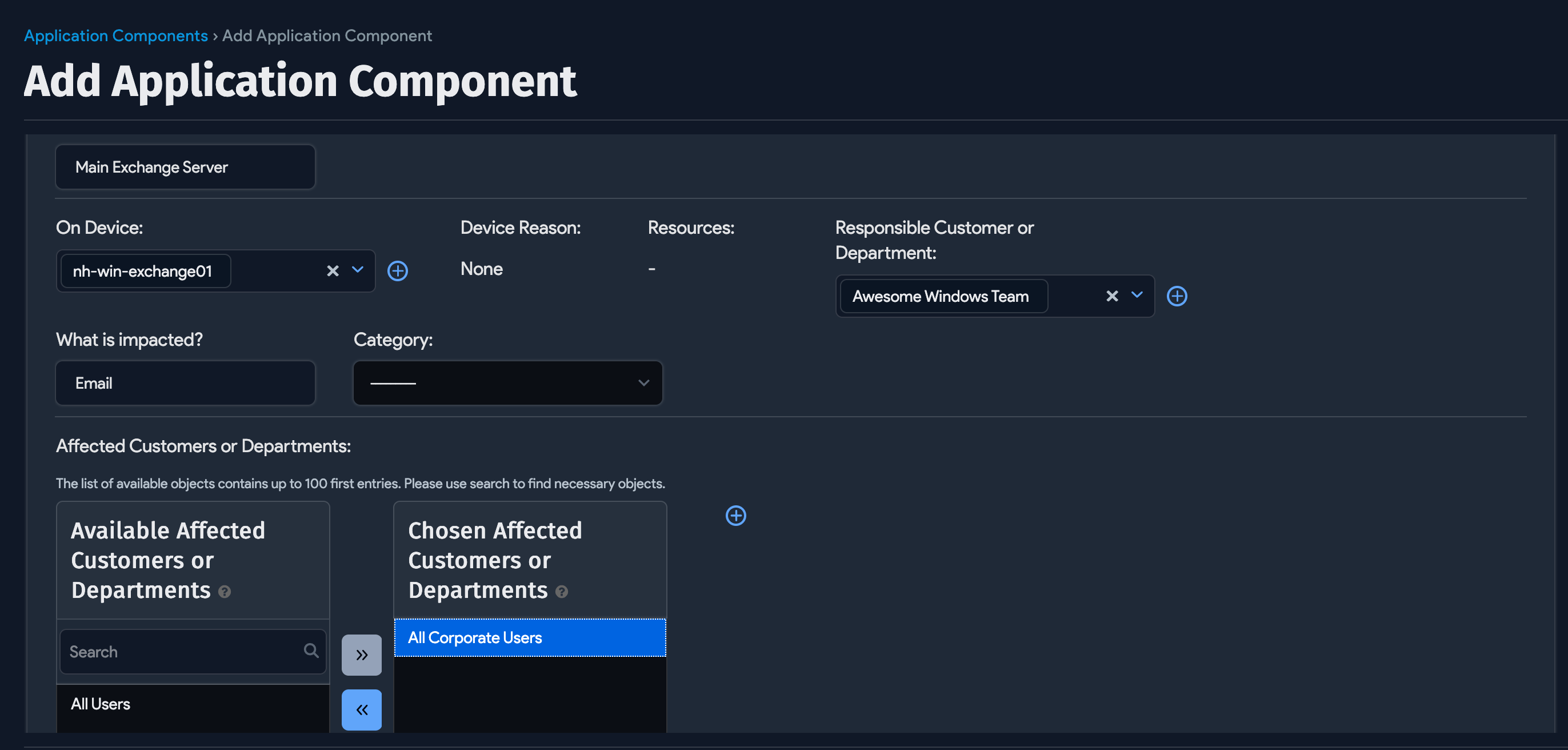
-
Add a dependency on the "store" component to the Main Exchange Server component, then Save the new component.


-
Next, add an Outlook Web Access (OWA) component.
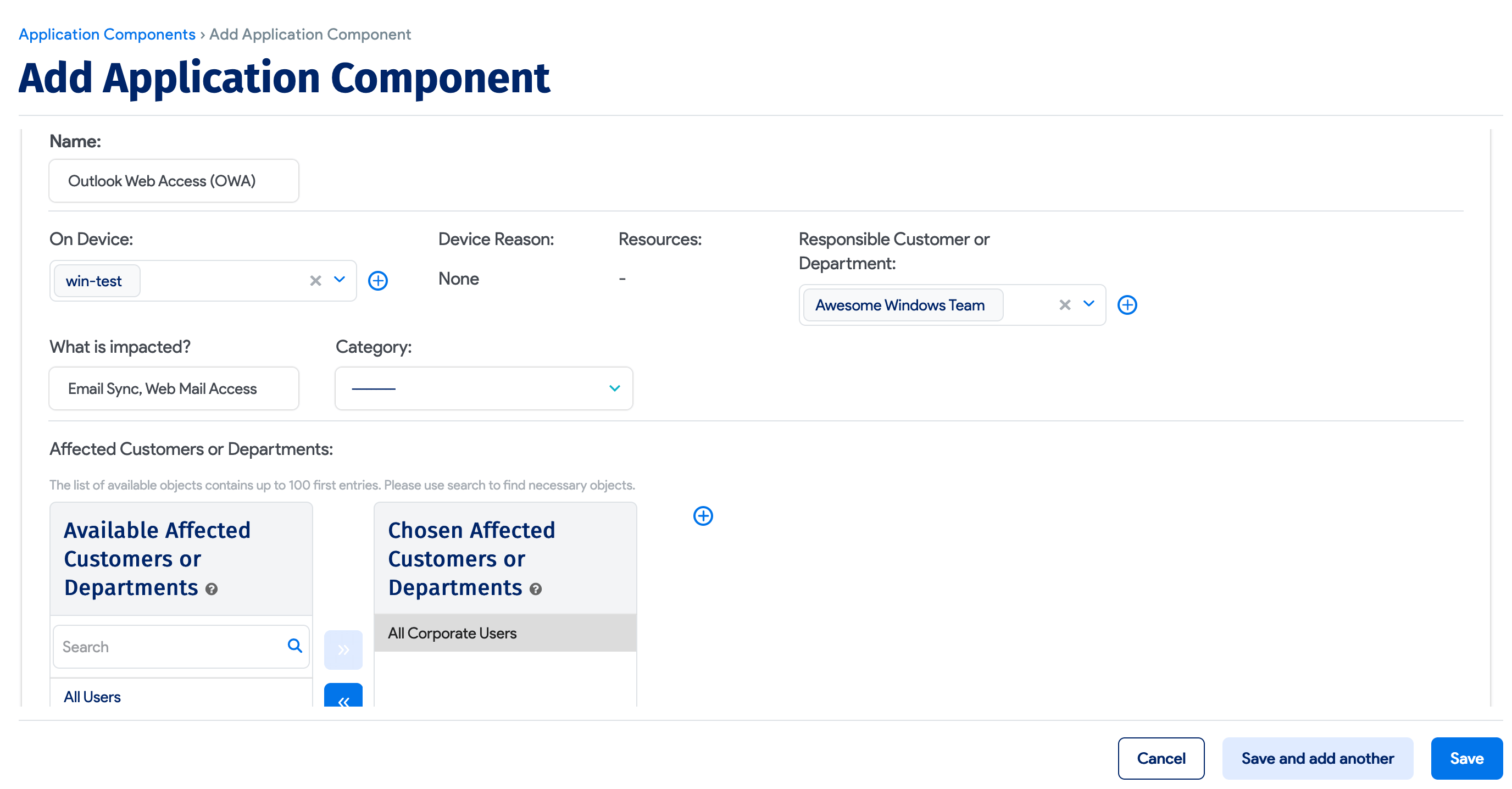
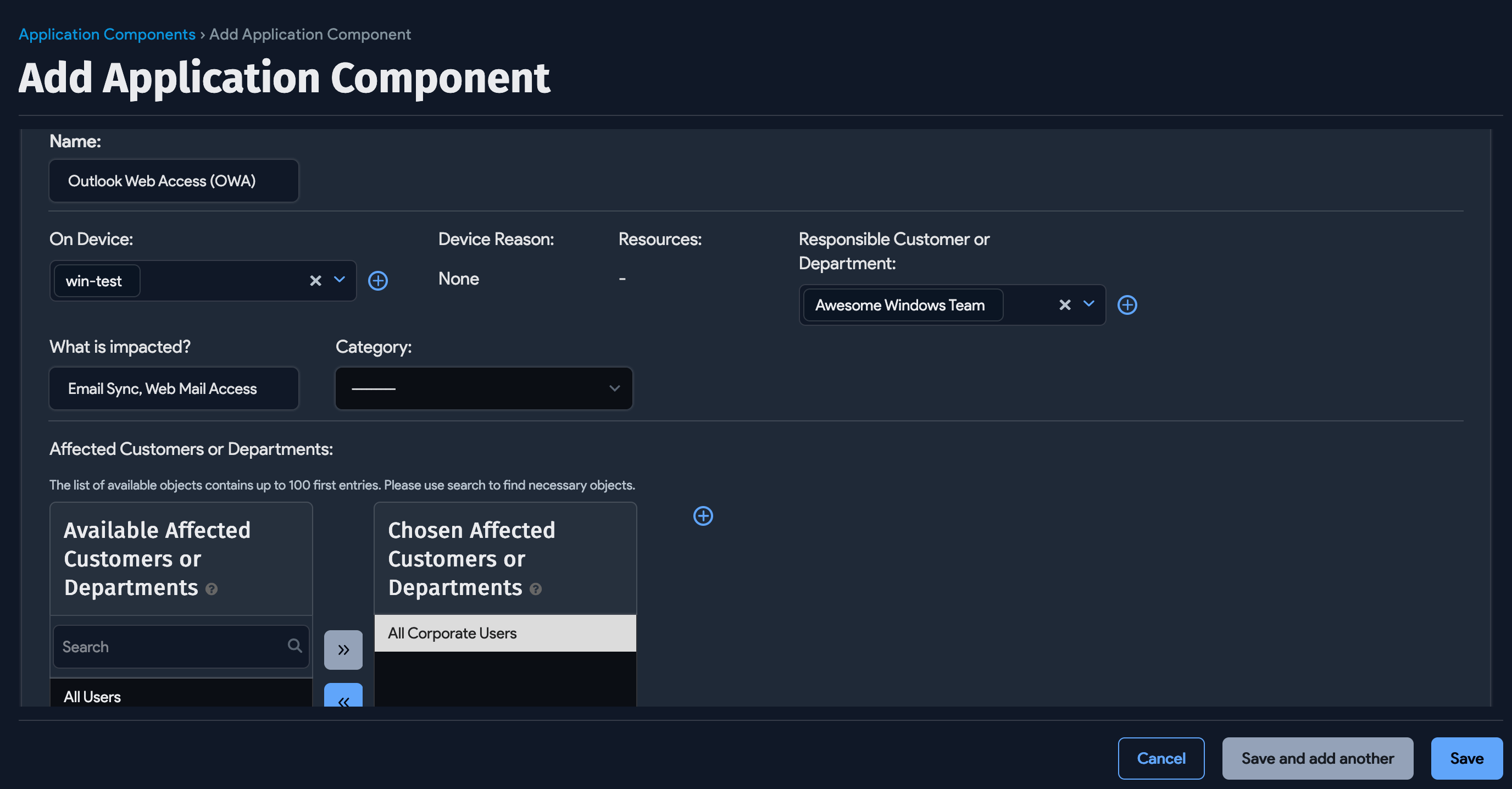
-
Finally, add the Main Exchange Server component as a dependency, as shown below:
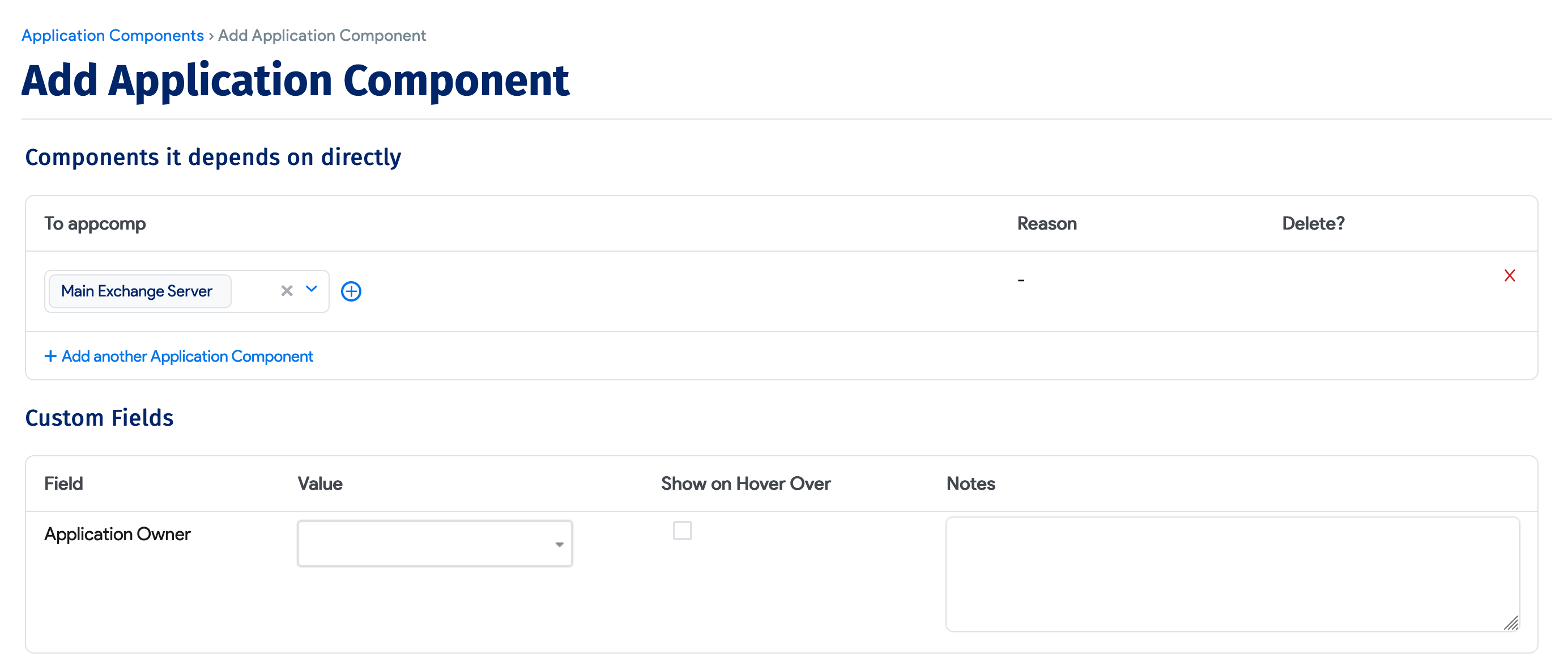
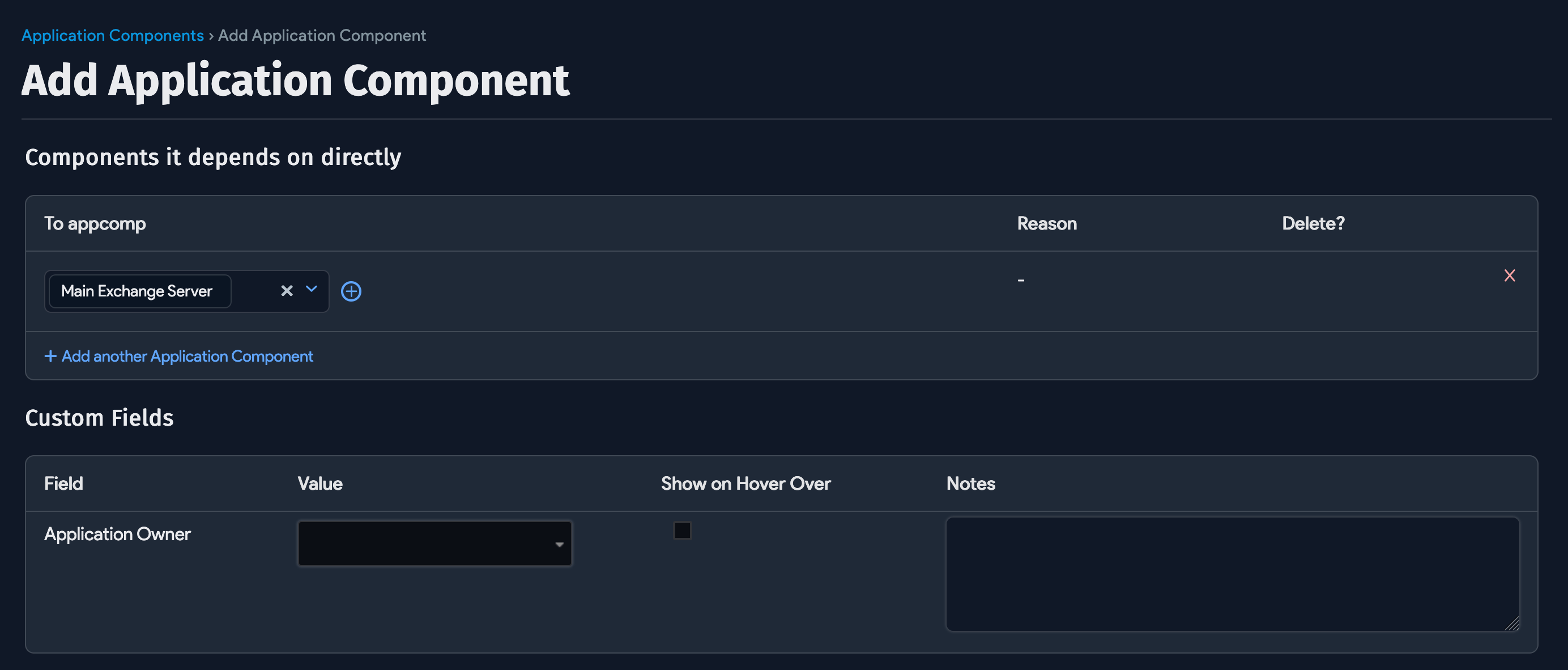
Set up Application Groups by defining a Starting Point or accepting suggestions. See the Application Groups Calculation Rules page for more details.